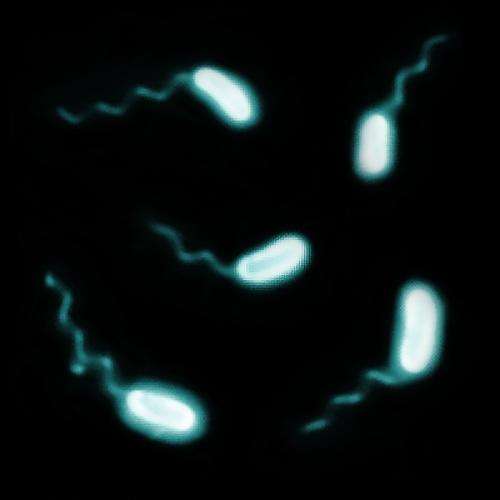Iron overload disease causes rapid growth of potentially deadly bacteria

Every summer, the news reports on a bacterium called Vibrio vulnificus found in warm saltwater that causes people to get sick, or die, after they eat raw tainted shellfish or when an open wound comes in contact with seawater.
People with a weakened immune system, chronic liver disease or iron overload disease are most at risk for severe illness. Vibrio vulnificus infections in high-risk individuals are fatal 50 percent of the time.
Now, researchers at UCLA have figured out why those with iron overload disease are so vulnerable. People with the common genetic iron overload disease called hereditary hemochromatosis have a deficiency of the iron-regulating hormone hepcidin and thus develop excess iron in their blood and tissue, providing prime growth conditions for Vibrio vulnificus.
The study also found that minihepcidin, a medicinal form of the hormone hepcidin that lowers iron levels in blood, could cure the infection by restricting bacterial growth.
The early findings were reported online Jan. 14 in the journal Cell Host and Microbe.
"This is the first time that the association of hepcidin deficiency and susceptibility to Vibrio vulnificus infection was tested," said senior author Dr. Yonca Bulut, a clinical professor of pediatrics at Mattel Children's Hospital at UCLA and a researcher with the UCLA Children's Discovery and Innovation Institute. "The dramatic effectiveness of the new treatment, even after the infection was established, was impressive."
To conduct the study, researchers compared the fatality of Vibrio vulnificus infection in healthy mice with mice that lacked hepcidin, modeling human hereditary hemochromatosis. The results showed that the infection was much more lethal in hepcidin-deficient mice because they could not decrease iron levels in the blood in response to infection, a process mediated by hepcidin in healthy mice.
Giving minihepcidin to susceptible hepcidin-deficient mice to lower the amount of iron in the blood prevented infection if the hormone was given before the Vibrio vulnificus was introduced. Additionally, mice given minihepcidin three hours after the bacterium was introduced were cured of any infection.
Hereditary hemochromatosis is a genetic disease that causes the body to absorb and store too much iron. It affects as many as 1 in every 200 people in the United States. Since it can take decades for the body to store damaging levels of iron, many people may not be aware that they have the disease until signs of the condition begin to appear later in life.
The co-directors of the UCLA Center for Iron Disorders, Dr. Tomas Ganz, a professor of medicine and pathology at the David Geffen School of Medicine at UCLA, and Elizabeta Nemeth, a professor of medicine at UCLA, led the invention of minihepcidins at UCLA. Minihepcidins are being developed for treatment of iron-overload disorders, such as hereditary hemochromatosis and Cooley's anemia. The use of minihepcidin to treat potentially lethal infections is a possible new application.
"We found that hepcidin is required for resistance to a Vibrio vulnificus infection," said the study's lead author Joao Arezes, a visiting graduate student from the University of Porto in Portugal. "The development of the treatment tested in mouse models could reduce the high mortality rate of this disease."
The next stage of research is to understand why Vibrio vulnificus bacteria become so lethal when iron levels are high, and to learn which other microbes respond similarly to excess iron.
Journal information: Cell Host and Microbe
Provided by University of California, Los Angeles



















